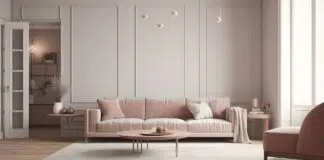Selecting wall art for your home can be a delightful yet daunting task. With countless options available, it’s easy to feel overwhelmed by the choices. Whether you’re redecorating a single room or giving your entire home a facelift, the right wall art can significantly enhance your space and reflect your personal style. To help you navigate the process, here are six practical tips for choosing the perfect wall art that complements your décor and expresses your taste.
1. Understand Your Space and Style
Before you start shopping for wall art, it’s crucial to understand the space where you’ll be placing it. Take note of the room’s size, color scheme, and existing furnishings. The artwork should complement these elements rather than clash with them. For instance, in a room with a minimalist design, a large, bold piece might serve as a focal point, while a collection of smaller prints could work better in a more eclectic setting.
Consider the room’s function as well. In a cozy living room, soft, calming artwork might enhance the atmosphere, while vibrant, energetic pieces could be more suitable for a home office or a game room. Additionally, the scale of the artwork should be proportionate to the wall it’s hanging on. Large walls often benefit from sizable pieces or gallery walls, whereas smaller spaces might require more restrained selections.
2. Choose a Theme that Resonates
A cohesive theme can unify the various elements in your home. Themes can range from abstract art to nature-inspired pieces, and selecting a theme that resonates with you will make the process easier. If you have a particular passion or interest, such as travel or music, incorporating related artwork can add a personal touch to your space.
One effective approach is to select a color palette that aligns with your room’s décor. For example, if your room features soft blues and greens, art that incorporates these hues can create a harmonious look. Alternatively, using a contrasting palette can add a pop of excitement and draw attention to your artwork.
3. Explore Different Art Mediums
Wall art comes in various forms, including paintings, prints, and photographs. Each medium offers a different texture and visual effect. Paintings can add a classic or contemporary feel depending on the style, while photographs can capture moments and memories in a unique way. Prints and posters are often more affordable and can be easily swapped out to refresh your décor.
Additionally, consider exploring less conventional options like wall decals or tapestries. These can provide a temporary and versatile solution for renters or those who frequently change their décor. For instance, Digital Printable Wall Art is another modern option that allows for easy customization and can be a great choice for personalizing your space. Such formats offer convenience and variety, as you can easily change and update your art collection without the need for physical storage.
4. Consider the Frame and Presentation
The presentation of your artwork can impact its overall effect. A well-chosen frame can enhance the piece and tie it into your room’s aesthetic. Frames come in various styles, from sleek and modern to ornate and classic. If you prefer a more contemporary look, consider frameless options or floating frames that give a sleek, clean appearance.
Another aspect to consider is the placement and arrangement of your artwork. Gallery walls, where multiple pieces are grouped together, can create a striking visual impact. When arranging a gallery wall, balance the sizes and frames of the artwork to ensure cohesion. Use templates or paper cutouts to experiment with different layouts before making any permanent decisions.
5. Think About Lighting
Lighting plays a crucial role in how your artwork is perceived. Proper lighting can highlight the details and colors of your pieces, while inadequate lighting can make them appear dull. Consider the natural light in the room as well as artificial lighting options like picture lights or wall-mounted sconces.
If you have a collection of artwork, adjustable lighting can help you showcase different pieces at various times. LED lights are a popular choice because they are energy-efficient and provide a clear, bright light that doesn’t alter the colors of your artwork. Ensure that the lighting complements the overall ambiance of the room without overwhelming it.
6. Reflect Your Personal Taste
Ultimately, the artwork you choose should reflect your personal taste and preferences. Your home is a reflection of who you are, and your wall art should tell a story that is uniquely yours. Don’t be afraid to select pieces that resonate with you emotionally or aesthetically, even if they don’t fit traditional design rules.
Trust your instincts and take your time finding artwork that makes you happy. Whether you prefer modern abstract pieces, vintage posters, or personal photographs, choosing artwork that you genuinely love will ensure that your space feels authentic and comfortable.
Choosing the right wall art involves a thoughtful approach to ensure it enhances your space and aligns with your personal style. By understanding your space, exploring different art mediums, and considering factors like framing and lighting, you can make informed decisions that bring out the best in your home. Reflect on your personal taste and preferences to select pieces that truly resonate with you. With these practical tips, you’ll be well on your way to curating a collection of wall art that transforms your space into a personalized haven.






